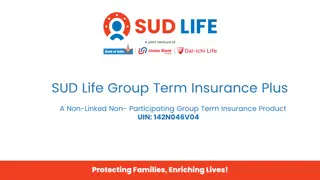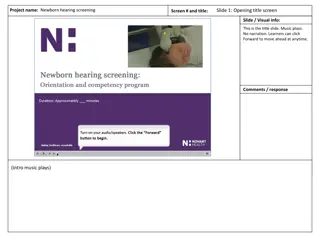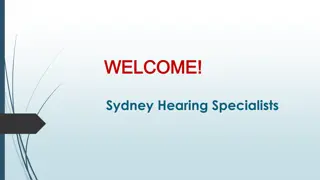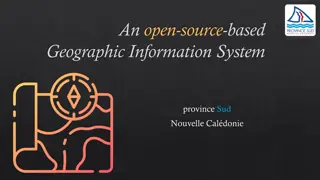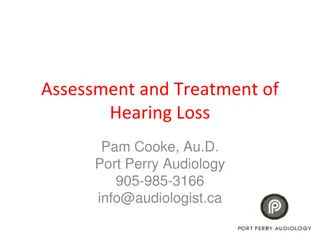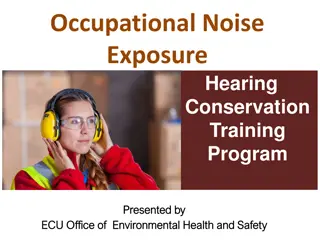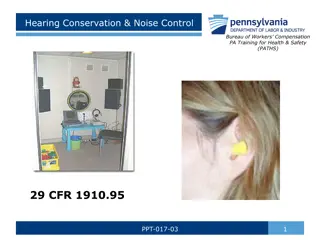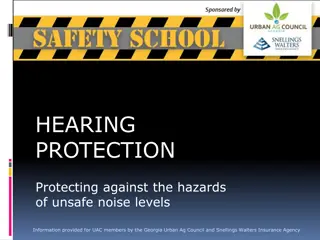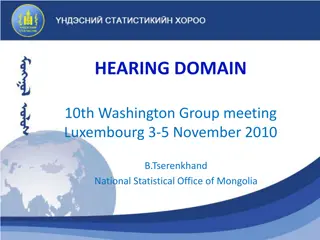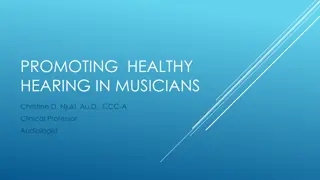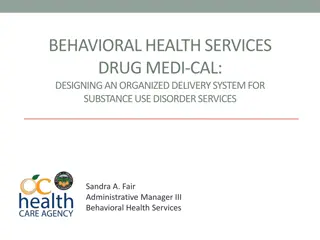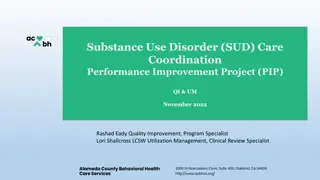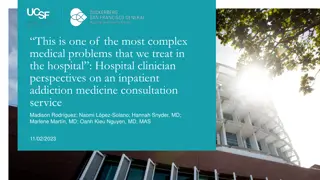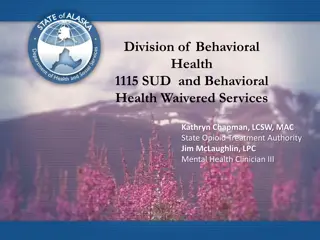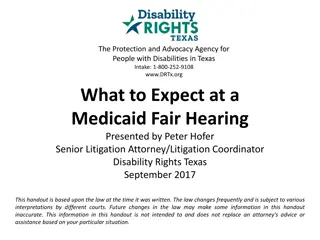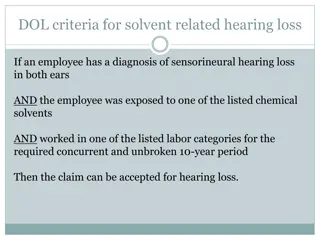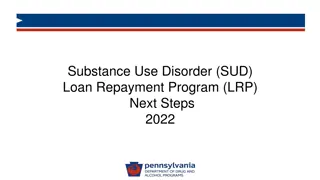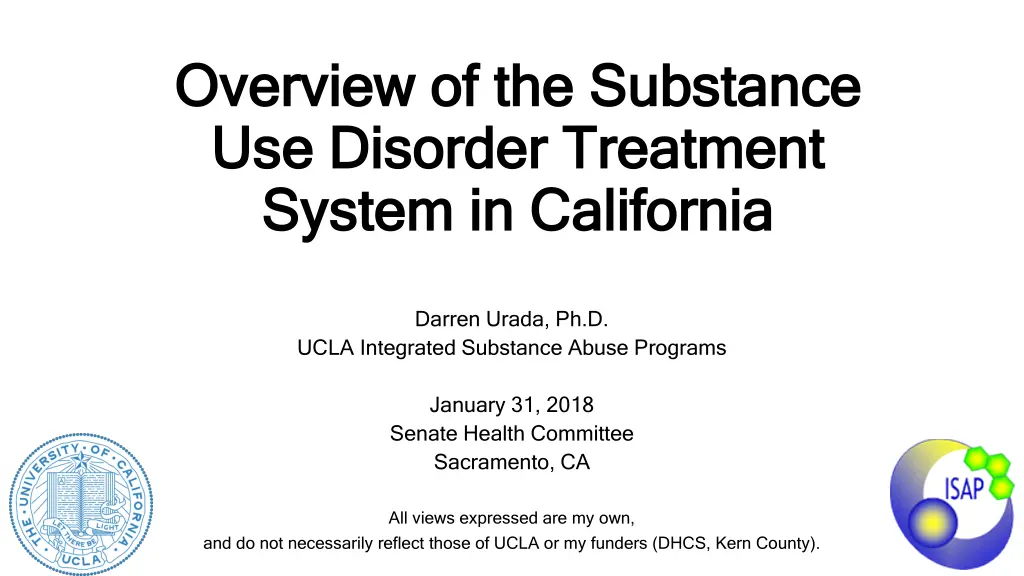
Substance Use Disorder Treatment System in California Overview
Explore the Substance Use Disorder Treatment System in California presented by Darren Urada, Ph.D., highlighting the effectiveness of drug abuse treatment, relapse rates, and the importance of long-term care strategies for drug dependence as a chronic illness.
Download Presentation

Please find below an Image/Link to download the presentation.
The content on the website is provided AS IS for your information and personal use only. It may not be sold, licensed, or shared on other websites without obtaining consent from the author. If you encounter any issues during the download, it is possible that the publisher has removed the file from their server.
You are allowed to download the files provided on this website for personal or commercial use, subject to the condition that they are used lawfully. All files are the property of their respective owners.
The content on the website is provided AS IS for your information and personal use only. It may not be sold, licensed, or shared on other websites without obtaining consent from the author.
E N D
Presentation Transcript
Overview of the Substance Overview of the Substance Use Disorder Treatment Use Disorder Treatment System in California System in California Darren Urada, Ph.D. UCLA Integrated Substance Abuse Programs January 31, 2018 Senate Health Committee Sacramento, CA All views expressed are my own, and do not necessarily reflect those of UCLA or my funders (DHCS, Kern County).
Todays (brief) talk Today s (brief) talk Does treatment work? SUD Treatment in California Terminology Illustration in 2 graphs Drug Medi-Cal Organized Delivery System Levels of care Summary & Conclusions
Does treatment work? Does treatment work? YES! drug abuse treatment has both a statistically significant and a clinically meaningful effect in reducing drug use and crime
People do relapse, but People do relapse, but at rates similar to other health conditions similar to other health conditions. at rates Source: National Institute on Drug Abuse https://www.drugabuse.gov/publications/principles-drug-addiction-treatment-research-based-guide-third-edition/frequently-asked-questions/how-effective-drug-addiction-treatment
Drug dependence generally has been treated as if it were an acute illness . . . long-term care strategies of medication management and continued monitoring produce lasting benefits. Drug dependence should be insured, treated, and evaluated like other chronic illnesses.
Substance Use Disorder Treatment in Substance Use Disorder Treatment in California California
Terminology Terminology Rehab is not a specific service. Type of Facility Sober Living / Recovery Residences Residential Treatment Detoxification / Withdrawal Management State Licensing/Certification None DHCS. DSS for youth facilities DHCS. CDPH for chemical dependency recovery hospitals, free standing psychiatric hospitals DHCS Other substance use disorder treatment levels of care
Statewide Time in Treatment Among Residential Treatment Completers Discharged Jan 1 2016- Dec 30 2017 3500 3000 Residential time in treatment has historically been driven By program, funding. 2500 Number of Clients 2000 1500 1000 500 0 0 20 40 60 80 100 120 140 160 180 200 220 240 260 280 300 320 340 360 Days in Treatment at Completion
Treatment based on patient needs IS possible.
Drug Medi-Cal Organized Delivery System Waiver (Part of Medi-Cal 2020) Covers 97.5% of the state s population (40/58 counties) Partly inspired by Santa Clara s system Level of care determined by ASAM criteria assessment Continuum of care based on ASAM Criteria Increased local control and accountability Provisions for program integrity and beneficiary protections Utilization tools to improve care and manage resources Evidence-based practices Coordination with other systems of care DMC-ODS is just getting started. Evaluation underway (data needed)
American Society of Addiction Medicine American Society of Addiction Medicine Levels of Care Levels of Care 0.5 1 2.1 2.5 3.1 3.3 3.5 3.7 4 Opiate Treatment Program / Narcotic Treatment Program Early Intervention Outpatient Intensive Outpatient Partial Hospitalization Clinically Managed Low-Intensity Residential Clinically Managed Population Specific High-Intensity Residential Clinically Managed High-Intensity Residential Medically Monitored Intensive Inpatient Medically Managed Intensive Inpatient
Summary and Conclusions Summary and Conclusions Treatment works. Sober living environments and counselor certification are not currently overseen by the state. Need to balance clamping down with encouraging capacity expansion A major effort to transform the Medi-Cal funded treatment system is underway. Drugs affect crime, employment, child welfare, etc. Data from multiple departments is needed to provide policymakers with the full picture, but often isn t available. Legislation would help.
Questions? Comments? Questions? Comments? Darren Urada, Ph.D. durada@mednet.ucla.edu

